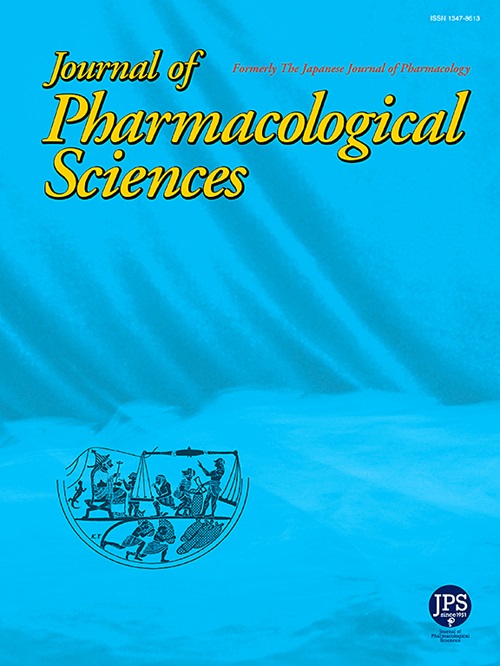Early temporal suppression of SPARC inhibits oxidative stress, inflammation, and fibrosis in the chronic phase after renal ischemia/reperfusion
IF 2.9
3区 医学
Q2 PHARMACOLOGY & PHARMACY
引用次数: 0
Abstract
Acute kidney injury is associated with not only high morbidity in the acute phase but also the development of chronic kidney disease (CKD). Recently, we found that suppression of secreted protein acidic and rich in cysteine (SPARC) exhibits renoprotective effects in acute ischemia/reperfusion (I/R) injury. The present study investigated the hypothesis that temporal suppression of SPARC in the early stages of I/R-injury might lead to the prevention of renal injury in the chronic phase. The left renal pedicle of male BALB/c mice was occluded for 45 min after right uninephrectomy and subsequently reperfused for 28 days. Small interfering RNA (siRNA) targeting SPARC was injected intravenously 1 day before and 3 days after I/R. Histological assessment revealed that SPARC knockdown by siRNA attenuated tubular injury, tubulointerstitial fibrosis, and the overexpression of 4-hydroxynonenal, a marker of lipid peroxidation. I/R-induced overexpression of a major source of superoxide NADPH oxidase, tumor necrosis factor-α, and matrix metalloproteinase-9 was suppressed by siRNA targeting SPARC. Treatment with siRNA targeting SPARC reduced the expression of a disintegrin and metalloproteinase with thrombospondin type 1 motif (ADAMTS1), which colocalizes with SPARC. In conclusion, SPARC might be a potential therapeutic target for preventing CKD development following acute I/R injury.
早期时间抑制SPARC可抑制肾缺血/再灌注后慢性期的氧化应激、炎症和纤维化
急性肾损伤不仅与急性期的高发病率有关,而且与慢性肾脏疾病(CKD)的发展有关。最近,我们发现抑制酸性和富含半胱氨酸的分泌蛋白(SPARC)在急性缺血/再灌注(I/R)损伤中具有肾保护作用。本研究探讨了在I/ r损伤早期时间抑制SPARC可能导致慢性肾损伤预防的假设。雄性BALB/c小鼠右肾切除后左肾蒂封闭45分钟,再灌注28天。在I/R前1天和后3天静脉注射靶向SPARC的小干扰RNA (siRNA)。组织学评估显示,通过siRNA敲低SPARC可减轻小管损伤、小管间质纤维化和4-羟基壬烯醛(脂质过氧化标志物)的过度表达。I/ r诱导的超氧化物NADPH氧化酶、肿瘤坏死因子-α和基质金属蛋白酶-9的过表达被靶向SPARC的siRNA抑制。靶向SPARC的siRNA治疗降低了与SPARC共定位的具有血小板反应蛋白1型基序(ADAMTS1)的崩解素和金属蛋白酶的表达。总之,SPARC可能是预防急性I/R损伤后CKD发展的潜在治疗靶点。
本文章由计算机程序翻译,如有差异,请以英文原文为准。
求助全文
约1分钟内获得全文
求助全文
来源期刊
CiteScore
6.20
自引率
2.90%
发文量
104
审稿时长
31 days
期刊介绍:
Journal of Pharmacological Sciences (JPS) is an international open access journal intended for the advancement of pharmacological sciences in the world. The Journal welcomes submissions in all fields of experimental and clinical pharmacology, including neuroscience, and biochemical, cellular, and molecular pharmacology for publication as Reviews, Full Papers or Short Communications. Short Communications are short research article intended to provide novel and exciting pharmacological findings. Manuscripts concerning descriptive case reports, pharmacokinetic and pharmacodynamic studies without pharmacological mechanism and dose-response determinations are not acceptable and will be rejected without peer review. The ethnopharmacological studies are also out of the scope of this journal. Furthermore, JPS does not publish work on the actions of biological extracts unknown chemical composition.

 求助内容:
求助内容: 应助结果提醒方式:
应助结果提醒方式:


